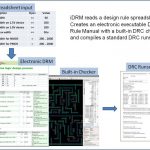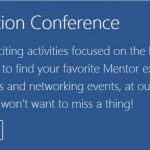DAC is coming, next week, in beautiful downtown Austin at the Convention Center. I’ll be there Monday and Tuesday, running around the exhibit area. If you haven’t yet got your plane and hotel tickets, drop everything and start looking. I’m guessing this will be as popular as it always is, especially given the venue. I know of multiple parties: the Gary Smith EDA kickoff Sunday night, another Gary Smith party and Solido, Cadence Denali, Silvaco and Cliosoft are all hosting parties downtown.
On the off-chance you’re going to DAC to do something other than party, on keynotes the iconic Joe Costello kicks off Monday with a pitch on “IoT: Tales from the front-line”. Tuesday Chuck Grindstaff from Siemens PLM will talk about digital twins (no, not robot doppelgangers). Wednesday Tyson Tuttle from Silicon Labs will give his view on accelerating the IoT. And Thursday Rosalind Picard will talk about a very intriguing topic, emotion technology, and how this can potentially help people with autism, depression and other problems. I hope they post all the talks because I’ll probably miss them thanks to my schedule.
There’s a lot of focus on IoT, starting with keynotes, but also getting into security, a perennial and constantly evolving challenge. There’s also an interesting looking contest on FPGA-based IoT which should be a must-see for the maker-types among you. Beyond this there is a rich palette of topics of which I can touch on just a few that piqued my interest.
On Sunday, I see a fascinating-sounding workshop on design automation for cyber-physical systems with speakers from Texas A&M, National Taiwan Univ, GM, Technische Univ in Munich, Upenn, UCI and UCF. They’ll be talking about automotive and transportation systems, smart home, building and community, smart battery and energy systems, surveillance systems, cyber-physical biochips, and wearable devices. They’ll be looking at the unique challenges posed by cyber physical systems, certainly in power, performance security and so on, but also real-time operation, handling uncertainties in sensor readings and more.
There will also be a workshop on autonomous vehicles, avionics, transportation and robotics which goes by the catchy handle of AVATAR, though I didn’t notice James Cameron among the speakers. They plan to touch on how needs in these areas intersect or can intersect with EDA, which should make this a very interesting opportunity for EDA product strategists.
On Monday, you’ll find sessions on Security IP for the IoT, also a tutorial on security validation for SoCs. Can’t-miss for any new designs. There are also a couple of machine learning sessions in the morning. In the afternoon, there’s a standard tutorial topic on the future of SoC validation and debug. Standard topic, yes, but you really can’t afford to miss this if you have anything to do with V&V. There will also be a session on safe platforms which probably also is a can’t miss for anyone designing for automotive applications.
Tuesday I noticed a session on security analysis and defense and a very perturbing session called “patch your car like your phone – design for extensibility in automotive systems”. Yikes. In the afternoon, you’ll find a session on model-based design for medical devices (I hope there’s no suggestion those be patchable). Later there’s a topic on AI and CNNs which should be fun. Another interesting theme in the afternoon, for verification geeks like me, is on nearby advances and far frontiers in verification. Then there are more very interesting sessions on security, especially a likely contentious topic asking whether hardware security is making a difference.
Wednesday opens with several topics on cyber-physical systems, including hardware design and time control. There’s a very timely topic on how we should test cognitive systems, particularly since unsupervised learning is becoming so hot. There’s a topic that designers, architects and product managers who can’t make it to Austin will wish they could attend – “Is integration leaving less room for design innovation?”. Then there’s more on safety and advances in security and, for the truly ambitious, several talks on design methods for quantum computing.
Thursday has a session on security nuts and bolts, a deep-dive into neural networks, an intriguing session on microfluidics and approximate computing, pushing beyond deep learning into neuromorphic computing and a topically-inspired session on “making neural networks great again”.
Phew – this is just a sample. First, book your tickets, then check out the full agenda HERE.







